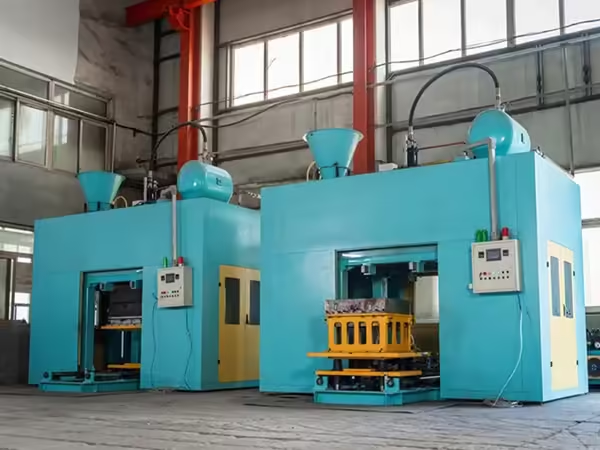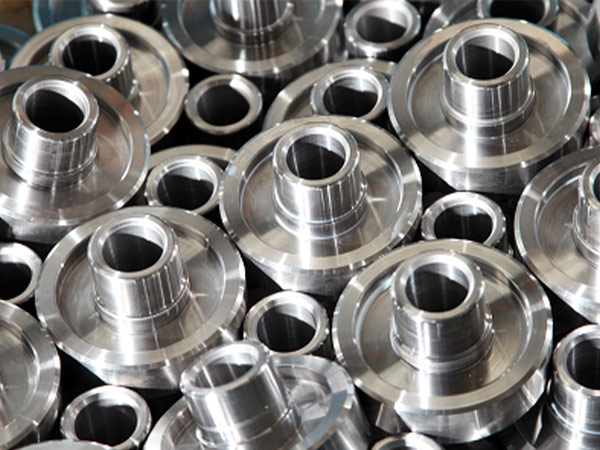Cast Iron Hand Water Pump Parts: 4 Failure Signs
Selamat Datang ke Blog Saya!
Saya teruja untuk mempunyai anda di sini! Sebelum kita menyelami kandungan, saya ingin anda menyertai saya di platform media sosial saya. Di situlah saya berkongsi cerapan tambahan, berhubung dengan komuniti kami yang hebat dan memaklumkan anda tentang berita terkini. Begini cara anda boleh terus berhubung:
📘 Facebook: Shanghai Leierwo Industry Trade Co., Ltd.
Sekarang, mari kita mulakan perjalanan ini bersama-sama! Saya harap anda mendapati kandungan di sini bukan sahaja bernas tetapi juga memberi inspirasi dan berharga. Mari mulakan!
Jadual Kandungan
pengenalan

Cast iron hand water pumps have served as a durable and reliable water access solution for rural homes, farms, gardens, and emergency backup systems. Their robust design and manually operated mechanisms make them ideal for off-grid or low-maintenance applications. However, like all mechanical equipment, the internal and external components of these pumps are not immune to wear and degradation over time.
The critical components—such as the pump handle, piston rod, check valve, spout, and flange—must remain in good condition to ensure proper functioning. If any of these parts are compromised, your hand pump may begin to fail, leading to inconvenience, water access issues, or worse, permanent damage to the entire system.
In this blog, we explore four key warning signs that your bahagian pam air tangan besi tuang might be failing. Identifying these symptoms early can save you time, money, and the hassle of dealing with complete system failure.
Sign 1: Unusual Noise or Resistance While Pumping
One of the first and most noticeable indicators that your bahagian pam air tangan besi tuang may be failing is the appearance of strange noises or increased resistance during use. Ideally, the pumping handle should move smoothly with minimal effort. Any irregularity in motion or sound may signal internal wear or damage to cast iron hand water pump parts.
If you begin to hear grinding, squeaking, or clicking sounds, this could indicate:
- Rust on internal surfaces due to moisture exposure
- Worn piston rods, bearings, or sleeves causing friction
- Loose handle bolts, linkages, or misaligned pivot points
These mechanical symptoms suggest that your cast iron hand water pump parts are either not properly lubricated or suffering from long-term wear. Disassembly and inspection are usually necessary to confirm the source of the problem. Checking all internal contact surfaces, moving components, and handle connections can help pinpoint any defect or misalignment.
Addressing these signs early not only avoids costly repairs but also prevents a complete system breakdown. Regular inspections and prompt replacement of compromised cast iron hand water pump parts will ensure long-lasting performance and safety.
Sign 2: Reduced Water Output or Weak Suction

Another key sign of failure in bahagian pam air tangan besi tuang is a noticeable decline in water output or suction strength. A fully functional pump should produce a steady and consistent stream of water. If this flow weakens or becomes intermittent, the internal parts may be compromised.
Common causes include:
- A damaged check valve failing to maintain vacuum pressure
- A worn or corroded piston or cylinder disrupting the compression process
- Air leaks from cracked fittings or deteriorated pipe joints
It’s important to distinguish between water source issues and mechanical faults. By performing a controlled pressure test or system inspection, you can confirm whether the cast iron hand water pump parts are responsible.
Timely repair or replacement of worn components, particularly valves and seals, can quickly restore performance. Additionally, using quality replacement cast iron hand water pump parts will improve overall reliability and longevity.
Sign 3: Visible Rust, Corrosion, or Flaking on Surfaces
Rust and corrosion are major concerns with any long-term use of bahagian pam air tangan besi tuang. While cast iron is known for its strength, exposure to moisture and oxygen can gradually degrade the metal surface. Rust not only weakens the structure but also creates friction and blocks water flow.
Visual signs to look for:
- Red-brown stains on the pump body or handle
- Pitted surfaces, flaking, or blistered paint
- Small cracks near bolt holes, joints, or the spout area
These may indicate that your cast iron hand water pump parts have started to degrade beyond surface level. Without intervention, the corrosion can spread internally, affecting pistons, valves, and sealing surfaces.
To prevent further damage, apply anti-rust coatings and clean exposed metal regularly. In severe cases, replacement of the affected cast iron hand water pump parts may be necessary to restore structural integrity.
Proper rust prevention and part inspection should be part of your routine maintenance, especially if the pump is installed outdoors or in humid environments.
Sign 4: Leaks or Water Drips Around the Pump Housing

Leaks are a clear indicator that the seal between bahagian pam air tangan besi tuang is no longer intact. These leaks may originate from:
- Gasket failure between the pump head and base
- Cracked flanges or housing components
- Worn-out seals or O-rings on the piston rod
Besides being wasteful, leaking pumps can flood the surrounding area, causing slippery surfaces or soil erosion. Furthermore, continual leakage corrodes both internal and external parts at a much faster rate.
Regularly check for moisture accumulation around joints or the base. Even a slow drip can suggest that it’s time for maintenance or part replacement.
Comparison Table of Common Issues and Solutions
| Warning Sign | Possible Cause | Tindakan yang Disyorkan |
|---|---|---|
| Unusual noise during operation | Worn bearings or rusted parts | Lubricate or replace worn parts |
| Weak suction or low water output | Leaking valves or damaged piston | Inspect seals, replace damaged internals |
| Surface corrosion | Exposure to moisture, low-quality coating | Recoat or replace corroded sections |
| Persistent water leaks | Gasket or seal failure | Reseal connections or install new gaskets |
Kesimpulan
Catching early signs of wear in bahagian pam air tangan besi tuang can prevent costly failures and preserve system longevity. Remember:
- Inspect moving parts monthly for rust, alignment, and noise
- Monitor suction strength to detect pressure loss
- Check for leaks and water drips
- Act promptly when parts show visual wear
Whether your pump is used daily or seasonally, a proactive approach to maintenance will always pay off. Replacing a single gasket or piston rod is far cheaper than replacing the entire pump or losing water access unexpectedly.
By understanding these four common warning signs and knowing what to look for, you ensure that your hand pump continues serving reliably for years to come.
Soalan Lazim
What are the most common parts that fail in a cast iron hand water pump?
The most frequently failing components in a traditional cast iron hand water pump are the piston rod, the check valve, and various sealing gaskets. These parts endure constant mechanical stress, exposure to water, and fluctuating pressure during each pumping cycle. Over time, wear and tear is inevitable, especially if regular lubrication and maintenance are neglected.
Because these specific bahagian pam air tangan besi tuang are subjected to repetitive motion and frequent sealing/unsealing, they tend to degrade faster than more static components. Replacing them promptly when early signs of failure appear—such as decreased water pressure or irregular pumping resistance—helps extend the overall service life of the pump.
How often should I perform maintenance?
Routine maintenance is key to preserving the efficiency and longevity of all bahagian pam air tangan besi tuang. A good rule of thumb is to perform basic visual inspections at least once a month, checking for any visible rust, leaks, or mechanical resistance. For pumps in frequent or heavy use, a comprehensive internal inspection should be conducted every 6 to 12 months.
During these in-depth checks, examine all critical cast iron hand water pump parts—such as the piston assembly, internal cylinder wall, valves, and linkage connections. Remove any buildup of mineral deposits, re-lubricate moving joints, and assess for signs of fatigue, corrosion, or misalignment.
By catching early wear before it escalates into failure, you not only protect your investment but also ensure reliable access to water when you need it most.
Can I use replacement parts from different brands?
Compatibility is an important concern when sourcing replacement cast iron hand water pump parts, especially if your original pump model is older or uncommon. Some components—like basic bolts or seals—may be standardized and interchangeable. However, many parts such as threaded valves, pistons, and housing fittings are designed to specific tolerances unique to each manufacturer.
Before purchasing aftermarket or third-party bahagian pam air tangan besi tuang, always consult your original user manual or manufacturer’s documentation. Fitting mismatched components can lead to improper sealing, mechanical instability, or even permanent damage to your pump.
If original parts are no longer available, work with a trusted supplier or repair technician to verify compatibility or source precision-made alternatives.
Is it better to repair or replace a severely rusted pump?
That depends on the extent of corrosion and the condition of core components. If the rust on your bahagian pam air tangan besi tuang is limited to surface discoloration or light scaling, it can often be removed with wire brushing, followed by re-coating with a rust-resistant paint.
However, deep rust pits, flaking metal, or cracks at stress points—such as near bolts, cylinder seals, or handle joints—may indicate structural weakening. In such cases, replacing the affected cast iron hand water pump parts, or even the entire pump, is often more cost-effective and safer in the long term.
When in doubt, disassemble the pump and inspect critical areas internally. Structural damage on pressure-bearing components should not be ignored, especially if the pump is used in essential water supply roles.
What type of coating protects cast iron best?
To shield bahagian pam air tangan besi tuang from long-term corrosion, especially in outdoor or wet environments, it’s essential to apply the right protective coating. Among the best options are epoxy-based rust-resistant paints, which offer excellent adhesion and long-lasting durability. Alternatively, powder coating provides a hard, wear-resistant finish and is often preferred for industrial applications.
Before coating, thoroughly clean all surfaces to remove existing rust and moisture. Primer may be necessary for optimal adhesion on rough or aged surfaces. Applying protective layers regularly ensures that your cast iron hand water pump parts remain resilient against oxidation and environmental wear, ultimately reducing maintenance needs and extending service life.
Kategori Produk
- Bahagian Injap
- Bahagian Pam Air
- Bahagian Kotak Galas
- Bahagian Die Casting
- Produk Pam Keluli Tahan Karat
- Produk Pam Besi Tuang
- Bahagian Injap Untuk Kegunaan Kereta
- Bahagian Kenderaan
- Bahagian Injap Untuk Kegunaan Awam
- Bahagian Pam Vakum KF

